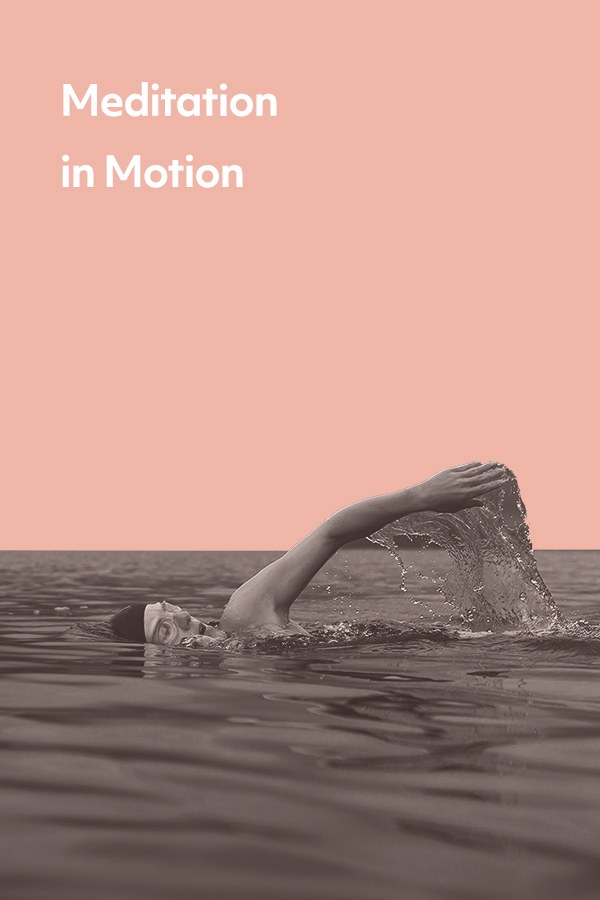There are far more options for meditation than just sitting still!
For those of us who grew up hearing meditation dismissed as ‘hippie nonsense,’ it can be a little startling to learn that meditation is a respected, well researched practice with positive impacts on physical, mental, and emotional health. The Mayo Clinic recognizes the benefits of meditation, saying, “Meditation can give you a sense of calm, peace and balance that can benefit both your emotional well-being and your overall health.” Meditation is of value no matter your circumstances, but it has been especially helpful for those of us in recovery from alcohol and substance use disorders.
Once we move past our initial closed-mindedness about meditation, though, some of us hit another snag: We just can’t sit still to meditate. For some, this is only a problem at the very beginning, after which they quickly learn to settle into traditional meditation. But for others, sitting or lying quietly in meditation never progresses further than an unplanned nap. If this is you, don’t worry! There are other ways to meditate that might be a better fit for you! Anchoring your attention, clearing your mind, directing your focus—all of these can be accomplished while moving.
Here are a few options for meditation in motion:
Traditional practices of meditation in motion
There are several long standing traditional practices that incorporate movements, breathing, and directing one’s mind and energy. They come from a wide range of cultural and spiritual traditions, and offer all of the benefits of meditation, plus additional advantages to physical wellness, like improved flexibility, stamina, and balance. Some options are:
- Tai Chi – Tai chi utilizes slow, gentle movements to align the body’s energy flow. It originated as a martial art, and has standardized postures and forms, which practitioners transition through in flowing, low impact movements. Tai chi classes are widely available in person and online, but if those aren’t an option for you, there are many videos and books to get you started.
- Yoga – Yoga is the first thing many people think of when they consider movement meditation. Yoga promotes mindfulness and awareness of the body and breath, and is extremely compatible with meditation. There are a wide variety of yoga disciplines and practices, so if one isn’t a good fit for you, try a different one before giving up!
- Qigong – Qigong is less well known in the US, but has a long history in China and among the Chinese diaspora. It combines dynamic practice (movements), static practice (holding postures), and meditative practice (focus on breath and mindfulness). It is not as commonly practiced in America as tai chi or yoga, but modern research supports its value.
Physical exercise to get into the flow
Many people will recognize the feeling of being “in the zone” while playing a sport or exercising. That feeling of absorption in an activity, where everything else falls away, is called “flow,” a term coined by Dr. Mihaly Csikszentmihalyi. You can get into the flow with any form of exercise, but some lend themselves to it especially easily:
- Swimming – Swimming laps is low impact and great cardio, and also has a repetitive rhythm and regulated breathing that help many swimmers get into the flow. Swim meditatively by being mindful of your body and breath, and of the pressure of the water against your body as you move through it.
- Running or walking – Running and walking are rhythmic and have the benefit of being activities that most of us grow up knowing how to do. Some meditate during while running or walking by focusing on one sensation, like their breath or their foot striking the ground. Others practice meditative mindfulness of their surroundings.
- Dancing – The combination of music and movement makes dancing meditation especially appealing to many. For some, structured dancing (following set choreography and steps) allows them to sink into the flow. For others the freedom of feeling and moving with the music is ideal for clearing the mind.
Busy hands, empty mind
Just because you have trouble with the “sitting still and quieting the mind” style of meditation doesn’t mean you have to be in full body motion. There are a lot of seated activities that can be a great portal to meditation:
- Puzzle and pattern games – Studies have demonstrated that for some, getting into the flow of playing Tetris can help combat cravings, and (if played after a traumatic event) may help to reduce trauma and stress. Other puzzle and pattern games similarly occupy the mind, clearing away distractions and allowing sharply directed focus.
- Crafts – Crafts that occupy the hands provide a focus for your mindfulness practice. Knitting is an especially popular craft for meditation, but anything from throwing pots to embroidery to painting can be done as meditation.
- Creating music – There are many ways of creating music that can be excellent for meditating. Drumming, playing an instrument, even singing can all calm the emotions, clear the mind, and focus the awareness.
The benefits of meditation are inarguable, no matter how you choose to meditate, so don’t feel constrained to the list above. Since you started reading this article, you’ve probably thought of five different options for meditation in motion that I never considered. The important thing is reaching the state of mindfulness, openness and peace, not the specific practices that get you there!









